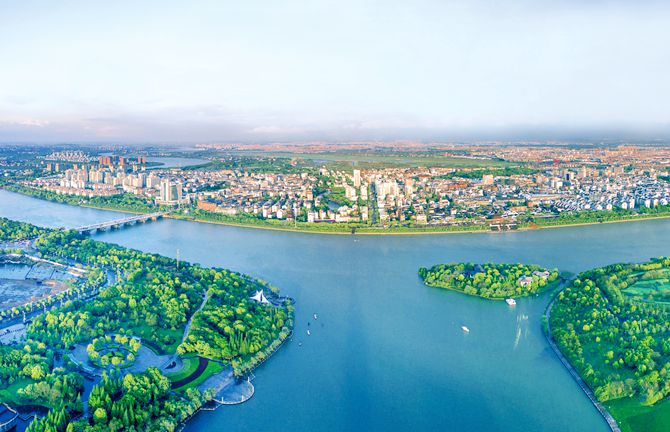- http://quzhou.chinadaily.com.cn/2020-03/24/c_294194.htm
- http://quzhou.chinadaily.com.cn/2020-11/30/c_293670.htm
Overview

Located in western Zhejiang Province in the upper reaches of the Qiantang River, Quzhou has long been known as a thoroughfare between four provinces: Zhejiang, Fujian, Jiangxi and Anhui.
Covering an area of 8,844 square kilometers, Quzhou is home to one county-level city (Jiangshan), two districts (Kecheng and Qujiang), and three counties (Longyou, Kaihua and Changshan), with a total population of 2.58 million.
The city boasts a long history, rich culture, pleasant living environment, advantageous geographical location, and strong economy.
Quzhou has a history of more than 6,000 years of civilization, while the city itself is 1,800 years old. It is home to many of Confucius's descendants and its Temple of Southern Confucianism is one of only two Confucian temples in China, as well as a key cultural heritage site under national protection.
More than 71 percent of Quzhou is covered in forest, and it has a good air rate of 88.8 percent with 33 micrograms per cubic meter of PM 2.5 in its downtown area and 13.24 square meters of grass per person. In 2018, the city was honored by the United Nations as an International Garden City. It has five locations selected as Natural Oxygen Bars in China in 2020.
Quzhou is conveniently located and easily accessible via air, rail, expressway, and water. The Quzhou airport offers flights to Beijing, Shenzhen, Qingdao, Kunming, Chongqing, Jinan, and Haikou, and after the Hangzhou-Quzhou high-speed railway is completed, it will take only 40 minutes to travel between the two cities. The Longyou port area of Quzhou Port has also opened to traffic.
The city's GDP reached 163.9 billion yuan ($2.53 billion) in 2020, with an average annual growth rate of 6.4 percent, while per capita GDP exceeded $10,000.

